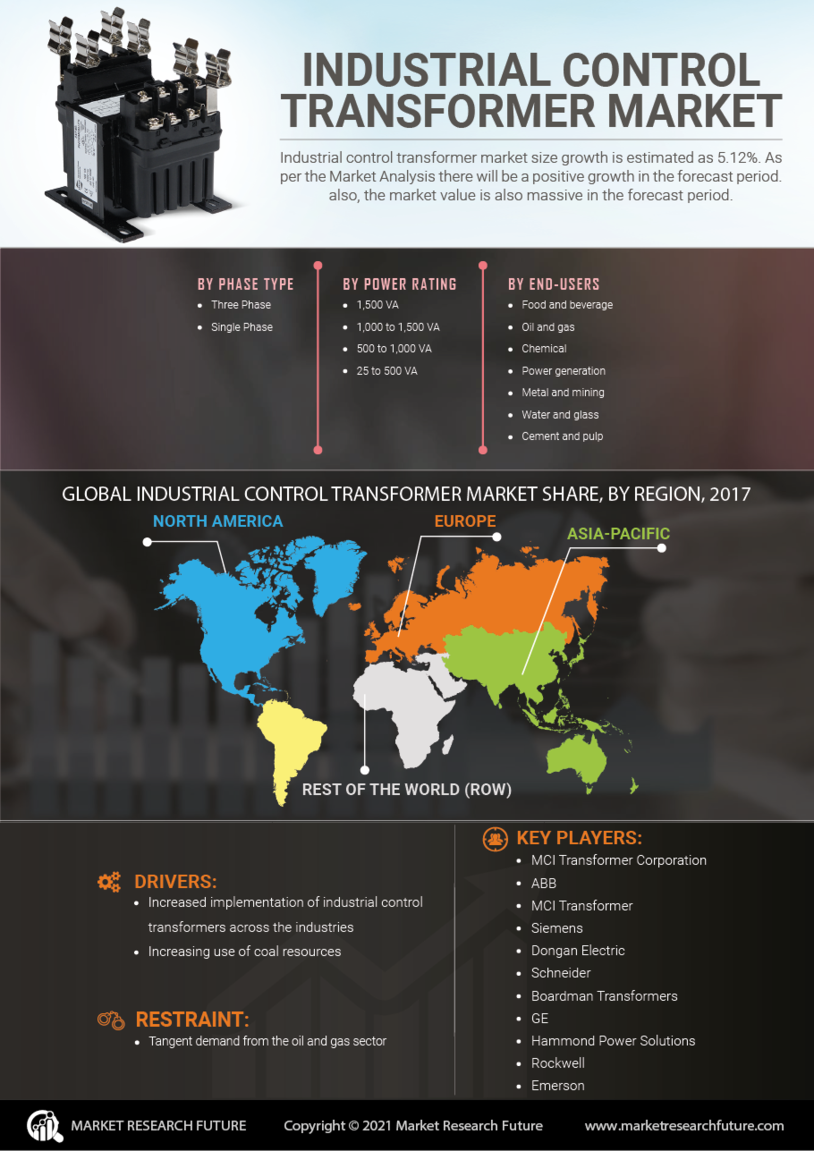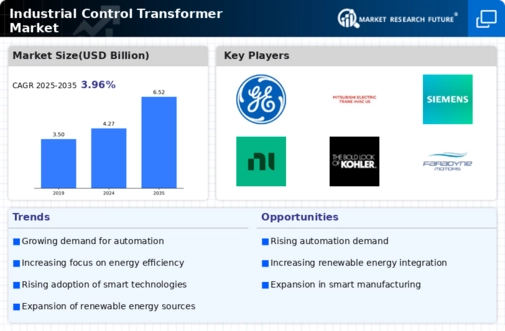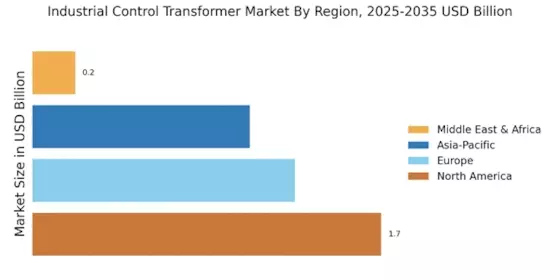Rising Demand for Automation
The Industrial Control Transformer Market is experiencing a notable surge in demand for automation across various sectors. Industries such as manufacturing, oil and gas, and utilities are increasingly adopting automated systems to enhance efficiency and reduce operational costs. This trend is driven by the need for precision and reliability in industrial processes. According to recent data, the automation market is projected to grow at a compound annual growth rate of approximately 9% over the next five years. As automation systems require reliable power supply solutions, the demand for industrial control transformers is expected to rise correspondingly, thereby bolstering the market.
Increased Focus on Energy Efficiency
The Industrial Control Transformer Market is witnessing a heightened focus on energy efficiency as industries strive to reduce operational costs and minimize environmental impact. Energy-efficient transformers are designed to reduce energy losses during operation, which aligns with global sustainability goals. As industries adopt energy management systems, the demand for high-efficiency industrial control transformers is likely to increase. Market analysis suggests that energy-efficient transformers can reduce energy consumption by up to 30%, making them an attractive option for businesses aiming to lower their carbon footprint while maintaining productivity.
Expansion of Industrial Infrastructure
The Industrial Control Transformer Market is benefiting from the ongoing expansion of industrial infrastructure in various regions. Governments and private entities are investing heavily in infrastructure projects, including power plants, manufacturing facilities, and transportation networks. This expansion necessitates the installation of robust electrical systems, where industrial control transformers play a crucial role in ensuring stable voltage levels and protecting sensitive equipment. Recent reports indicate that infrastructure spending is anticipated to reach trillions of dollars in the coming years, creating a favorable environment for the growth of the industrial control transformer market.
Regulatory Compliance and Safety Standards
The Industrial Control Transformer Market is influenced by stringent regulatory compliance and safety standards imposed by governments and industry bodies. These regulations mandate the use of high-quality transformers that meet specific performance and safety criteria. As industries strive to comply with these regulations, the demand for reliable industrial control transformers is likely to increase. Furthermore, adherence to safety standards not only protects equipment but also ensures the safety of personnel working in industrial environments. This growing emphasis on compliance is expected to create a robust market for industrial control transformers in the foreseeable future.
Technological Innovations in Transformer Design
The Industrial Control Transformer Market is being propelled by technological innovations in transformer design and manufacturing. Advances in materials science and engineering have led to the development of transformers that are lighter, more efficient, and capable of handling higher loads. These innovations not only enhance performance but also improve the lifespan of transformers, making them more appealing to end-users. The introduction of smart transformers, which incorporate digital monitoring and control features, is also gaining traction. This trend is expected to drive the market forward as industries seek to modernize their electrical systems.


















Leave a Comment